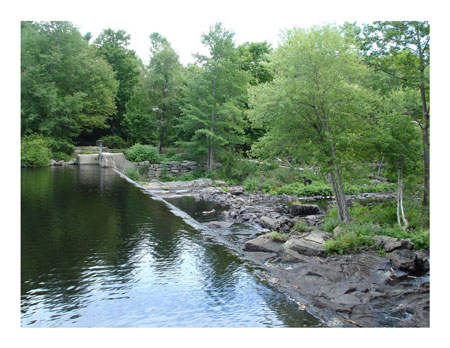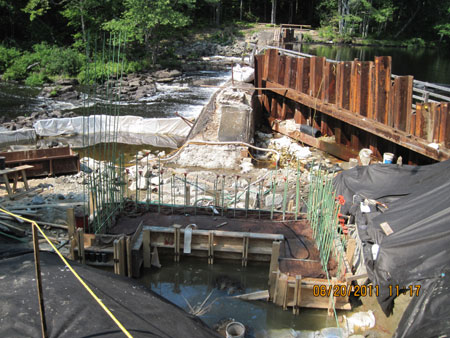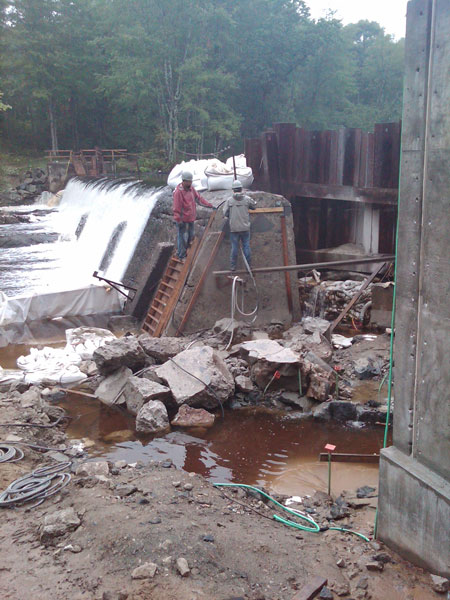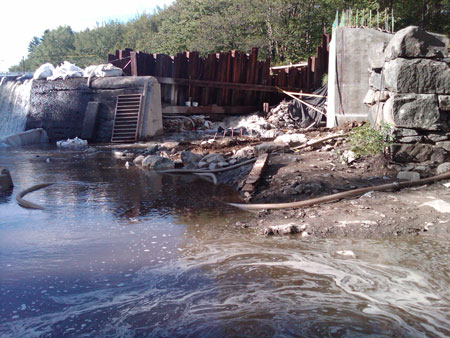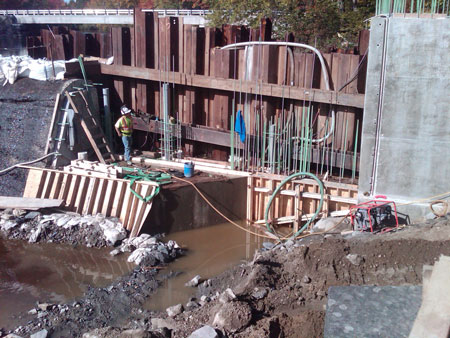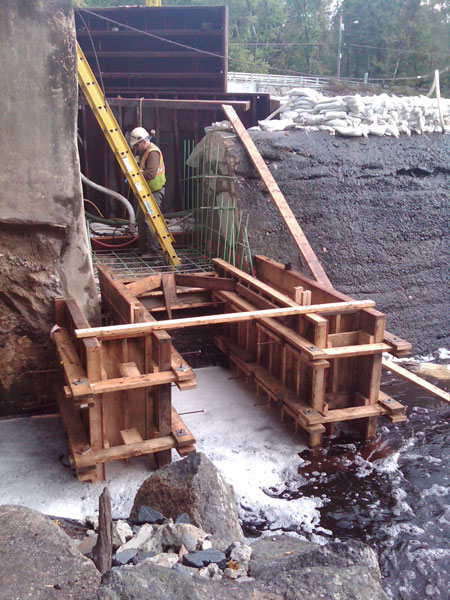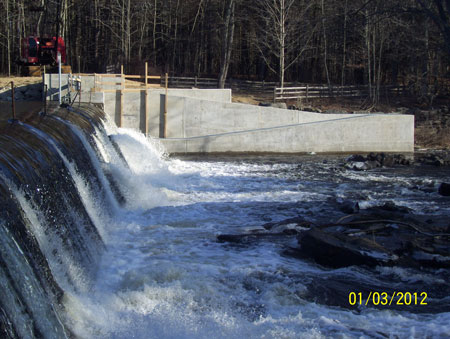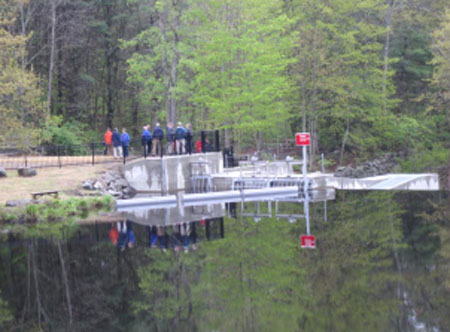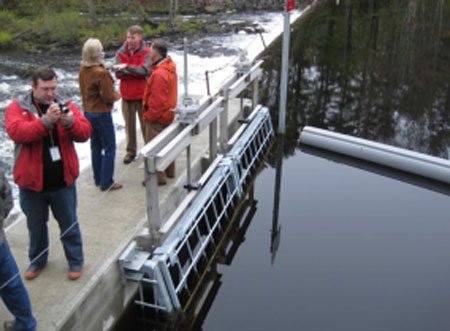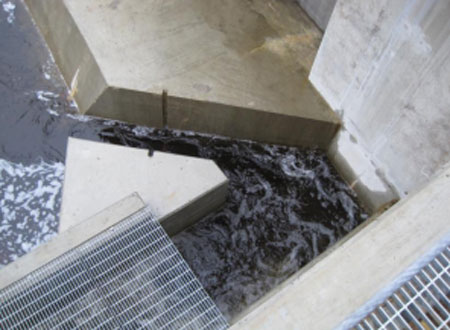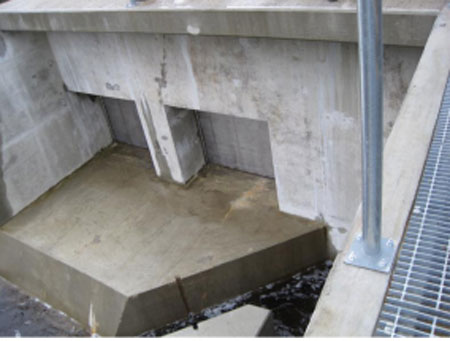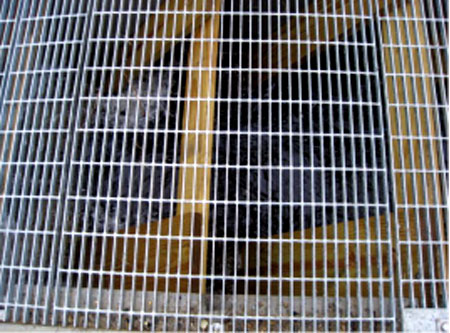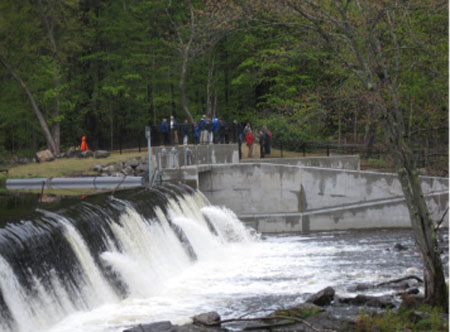Wiswall Falls Fish Ladder Construction
Background:
In 2011-2012, the fish ladder at Wiswall Falls in Durham was constructed. This project began as a job to address safety issues with the Wiswall Dam. Dam work is expensive and complicated, but the Town of Durham saw an opportunity to repair the dam and construct a badly needed fish ladder at the same time under the same permitting cycle. The Natural Resources Conservation Service (NRCS) provided a grant to fund about half of the $1.9 million price tag.
The New Hampshire Department of Fish and Game was consulted and engineering plans were drawn up for the dam repair and fish ladder. The process was looking good and moving forward. Because Wiswall Falls is listed on the Register of Historic Places both in New Hampshire and federally, personnel from the NH Bureau of Historic Resources were invited to review the plans and do a site visit. This visit was when the original plan met its first major obstacle. The planned fish ladder would have permanently obscured and obliterated the historic sawmill foundation along the river. This was deemed unacceptable and the plan was rejected.
Through many revisions and delays, the final plan detailed needed dam repairs and a new fish ladder that would leave the remaining sawmill corner along the river untouched and protected. This section of granite foundation became known as "the corner of historic significance".


